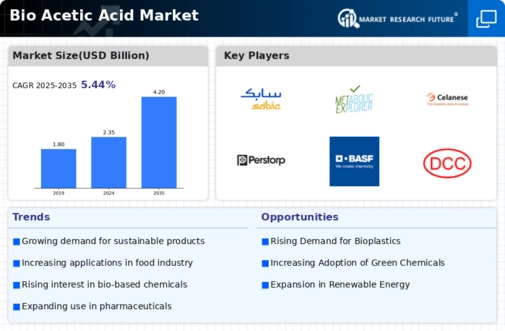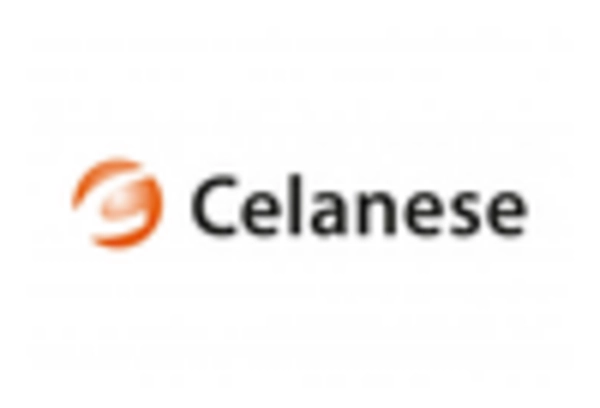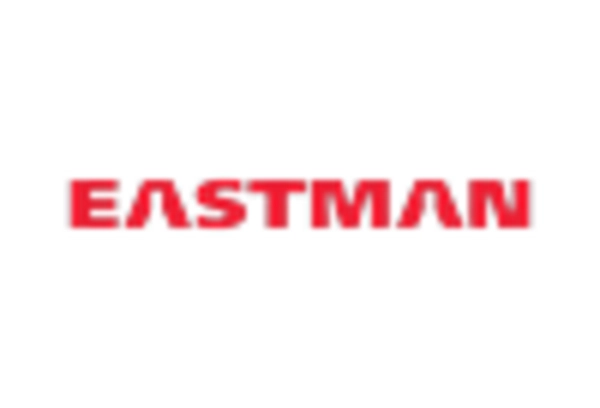Supportive Regulatory Frameworks
The presence of supportive regulatory frameworks is a crucial driver for the Bio Acetic Acid Market. Governments worldwide are implementing policies that encourage the use of bio-based chemicals, including bio acetic acid, as part of broader sustainability initiatives. Regulations aimed at reducing carbon emissions and promoting renewable resources are fostering an environment conducive to market growth. For example, incentives for biofuel production and the establishment of standards for bio-based products are likely to enhance the competitiveness of bio acetic acid. This regulatory support not only boosts consumer confidence but also encourages manufacturers to invest in bio acetic acid production. As these frameworks become more robust, the Bio Acetic Acid Market is expected to thrive, benefiting from increased demand and investment.
Growing Awareness of Health and Safety
The rising awareness of health and safety concerns among consumers is increasingly influencing the Bio Acetic Acid Market. As individuals become more conscious of the ingredients in their food and products, there is a marked shift towards natural and safe alternatives. Bio acetic acid, known for its non-toxic properties, is gaining traction as a safer option compared to synthetic chemicals. This trend is particularly evident in the food and beverage sector, where consumers are demanding cleaner labels and healthier options. Market data indicates that the demand for natural preservatives is on the rise, with bio acetic acid positioned as a favorable choice. Consequently, the Bio Acetic Acid Market is likely to benefit from this heightened focus on health and safety, as manufacturers respond to consumer preferences for safer, bio-based products.
Rising Demand for Eco-Friendly Products
The increasing consumer preference for sustainable and eco-friendly products is a pivotal driver in the Bio Acetic Acid Market. As awareness of environmental issues grows, industries are shifting towards greener alternatives. Bio acetic acid, derived from renewable resources, aligns with this trend, offering a biodegradable option compared to traditional acetic acid. This shift is reflected in the market, where the demand for bio-based chemicals is projected to grow at a compound annual growth rate of approximately 10% over the next few years. Companies are increasingly adopting bio acetic acid in various applications, including food preservation and pharmaceuticals, further propelling its market presence. The Bio Acetic Acid Market is thus positioned to benefit from this rising demand, as consumers and businesses alike prioritize sustainability in their purchasing decisions.
Expanding Applications in Various Industries
The versatility of bio acetic acid is a significant driver in the Bio Acetic Acid Market. Its applications span across multiple sectors, including food and beverages, pharmaceuticals, and textiles. In the food industry, bio acetic acid is utilized as a preservative and flavoring agent, while in pharmaceuticals, it serves as a key ingredient in the synthesis of various drugs. The textile industry also employs bio acetic acid in the production of synthetic fibers. This broad applicability is expected to enhance market growth, with estimates suggesting that the market could reach a valuation of USD 1 billion by 2027. As industries continue to explore and expand the use of bio acetic acid, the Bio Acetic Acid Market is likely to experience sustained growth driven by innovation and diversification.
Technological Innovations in Production Processes
Technological advancements in the production of bio acetic acid are transforming the Bio Acetic Acid Market. Innovations such as fermentation technology and catalytic processes are enhancing the efficiency and cost-effectiveness of bio acetic acid production. These advancements not only reduce production costs but also minimize environmental impact, aligning with the industry's sustainability goals. For instance, recent developments in biotechnological methods have improved yield rates significantly, making bio acetic acid more competitive against petrochemical alternatives. As these technologies continue to evolve, they are expected to drive down prices and increase accessibility, potentially expanding the market. The Bio Acetic Acid Market stands to gain from these innovations, as they facilitate the transition towards more sustainable production methods.


















Leave a Comment